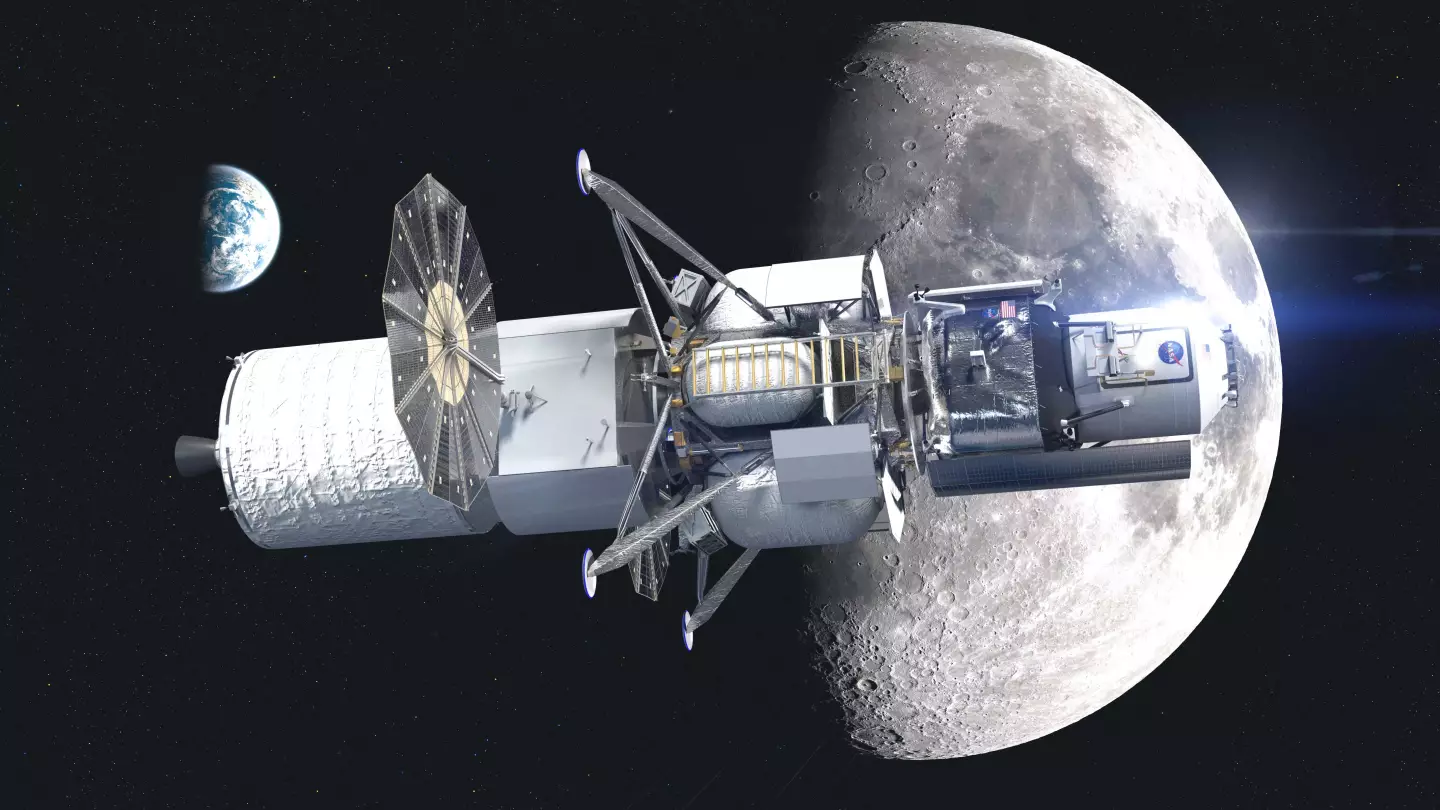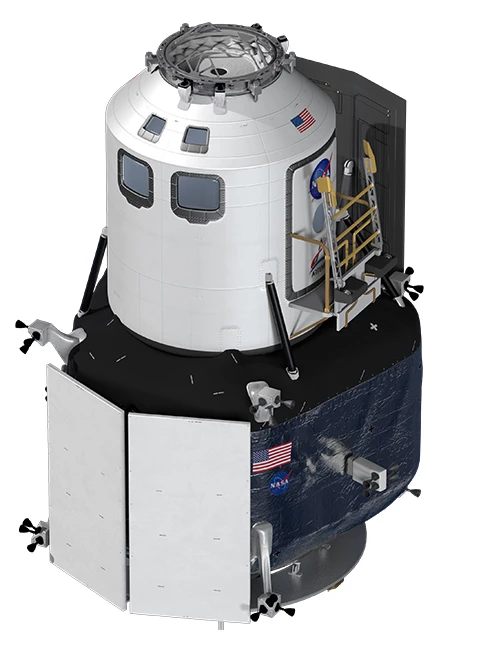A full-sized mock-up of the lander that may one day put the next US astronauts on the Moon was unveiled today in the Space Vehicle Mockup Facility at the Johnson Space Center in Houston. Built by the Human Landing System (HLS) National Team consisting of Blue Origin, Lockheed Martin, Northrop Grumman and Draper, the HLS engineering mock-up will be used to help astronauts and NASA engineers to provide feedback on the final design.
When Neil Armstrong set foot on the Moon on July 20, 1969, the historic event was made possible by the development of two spacecraft consisting of four distinct modules. The first spacecraft was the Command Service Module (CSM) made up of the Command Module, which was the home and workspace for the three astronauts, and the Service Module, which provided the mission with its primary propulsion as well as water and power. The second was the Lunar Module (LM), with a Descent Module for landing on the Moon and an Ascent Module for returning to orbit.
Fast forward to 2020 and the key element of NASA's Artemis program, which aims to set up a permanent American manned presence on the lunar surface, is another modular system – the HLS. This new system takes the modular approach a step further – like the LM, the 40-ft (12 m) tall HLS has an Ascent Element and Descent Element for landing on the Moon, but where the LM was an integrated spacecraft, the different modules of the HLS are designed to act like independent craft.

Based on Blue Origin’s Blue Moon cargo lander and throttleable BE-7 LOX/hydrogen engine, the Descent Element has been under development for three years. Unlike the Descent Module on the LM, the DE is autonomous and can land without the need for a human pilot. As a result, it can not only be used for the first manned Artemis landing planned for 2024, but also as an independent unmanned spacecraft for an earlier demonstration landing, and also for bringing large cargo payloads to the lunar surface.
Meanwhile, the Lockheed-built AE that carries the astronauts is based on the Orion spacecraft and incorporates many of the same avionics, software, life support hardware, crew interfaces, subsystems, and mission operations. This not only avoids re-inventing the wheel but also provides crews with a commonality that will speed up and simplify training.
Not part of the current mock-up is the Northrop Grumman-built Transfer Element, which is derived from the company's Cygnus cargo module. Its purpose is to deliver the lunar lander into a low orbit, so it can conserve as much fuel as possible, allowing for more flight time and larger payloads.

In addition to the element modules, technology company Draper provides descent guidance and avionics for the lander.
Blue Origin says the mock-up lander will be at the Johnson Space Center through early next year, where it will be used for engineering and crew operations tests and simulations with the Artemis astronauts to gain feedback needed to build the final spacecraft.
"Testing this engineering mock-up for crew interaction is a step toward making this historic mission real," says Brent Sherwood, vice president of Advanced Development Programs, Blue Origin. "The learning we get from full-scale mock-ups can’t be done any other way. Benefiting from NASA’s expertise and feedback at this early stage allows us to develop a safe commercial system that meets the agency’s needs."
The video below discusses the HLS lander.
Source: Blue Origin








